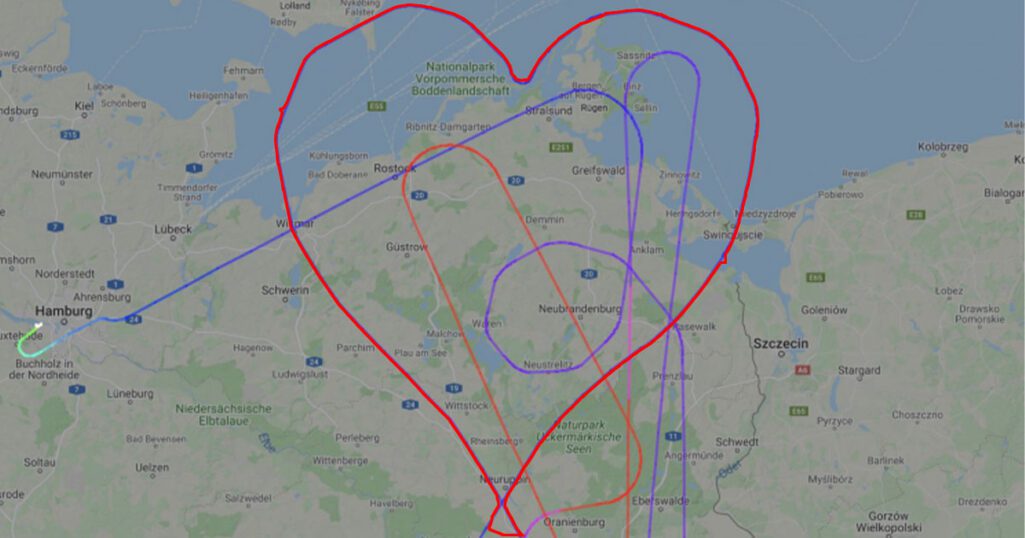
This is a question that frequent fliers and pilots alike have had to answer: Boeing or Airbus? Airbus and Boeing are two of the most powerful competitors in the airline industry. Multiple arguments are made for and against which is more powerful and superior in the aviation sector between the two.
Passengers also have a hard time telling the difference between a Boeing and an Airbus flight. Since flying is now a regular part of most people’s schedules, knowing the distinction between the two planes is crucial. If you’ve ever flown on either an Airbus or a Boeing but weren’t sure how to tell them apart, this article should help.
Boeing Vs. Airbus
Airbus and Boeing have been in a competitive duopoly in the market for big jet airliner aircraft since the 1990s. So Let’s have a look at the key points that set apart these two aircraft manufacturers.
1- Place of Origin
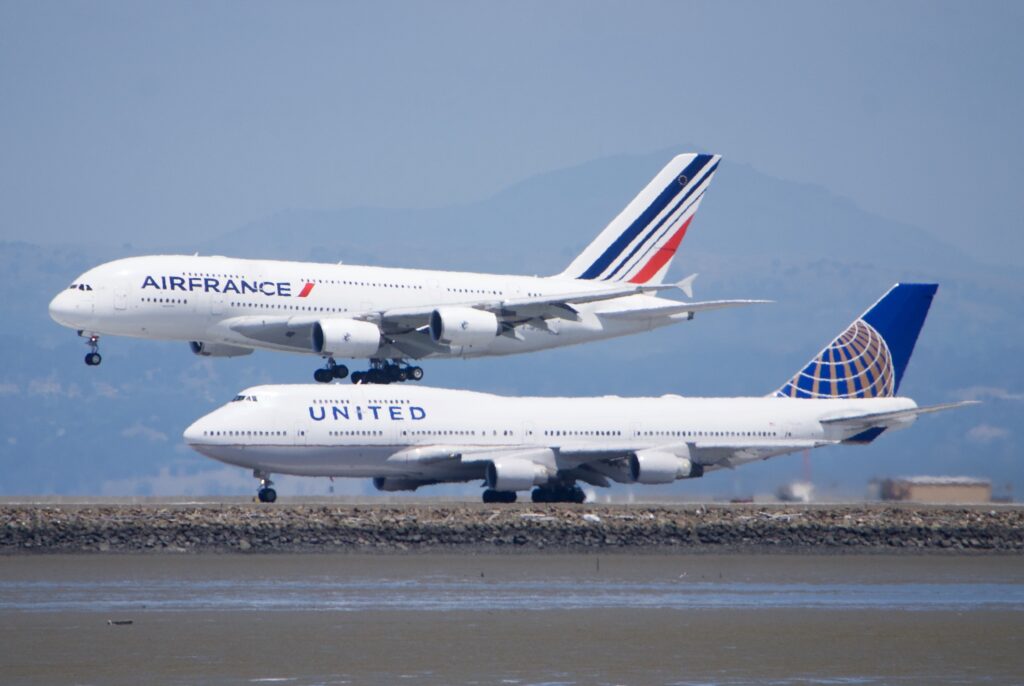
The first noticeable distinction between Airbus and Boeing is in production. Boeing is an American aerospace company. Airbus, on the other hand, is a French company that makes airplanes. But Boeing predates Airbus by about two decades, having been founded in 1916 as opposed to 1970. Some people call Boeings “ancient machines” and claim that Airbus is more receptive to radical improvements in aircraft design.
2- The Design Of The Nose & Windshield
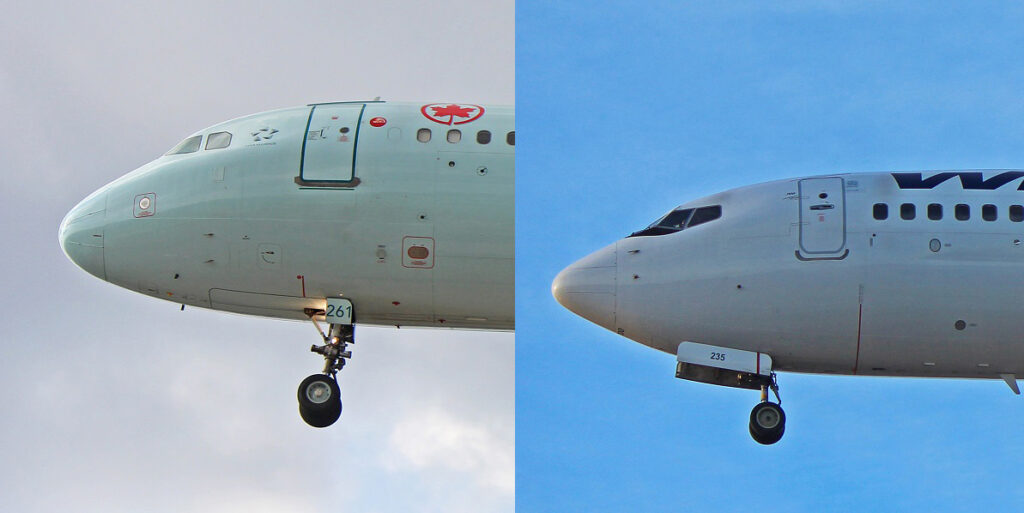
Both planes have distinctively different front ends, making them easy to tell apart. The nose of an Airbus is more rounded than that of a Boeing, which is more pointed. When viewing the plane from the front, the difference is most obvious. The shape of their noses is a quick and easy way to tell them apart.
And when it comes to windshields, Boeing planes have a V-shaped windshield, while Airbus planes have a notched one.
3- Landing Gear

As the name implies, the landing gear is the undercarriage of a plane or spaceship that is employed during takeoff and landing. The landing gear on an Airbus is longer up front than on a Boeing. Airbuses’ rear landing gear leans backward, while Boeing’s leans forward. This distinction is more obvious when comparing two planes side by side than when examining either one individually.
4- Design of the Engine
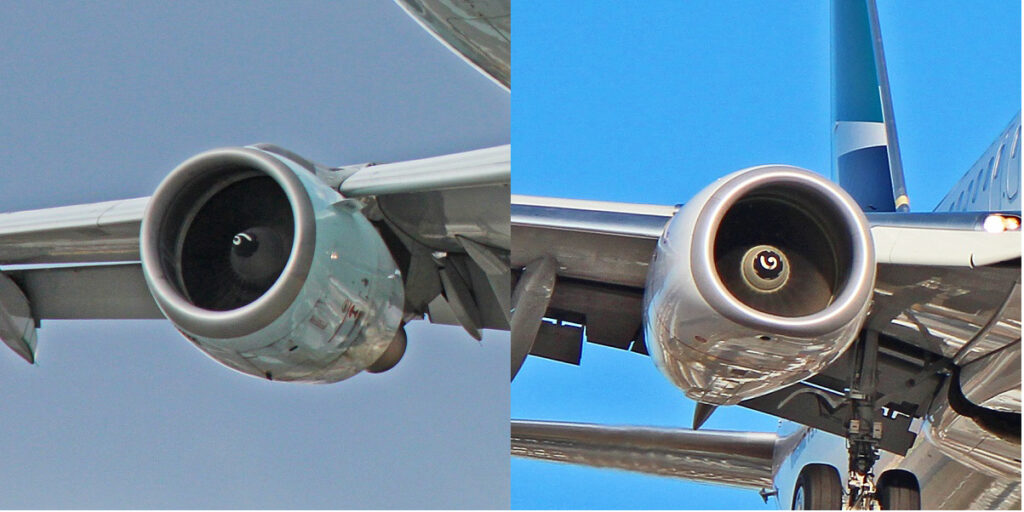
One of the most important parts of an airplane is the engine, and the two planes’ engines are completely different. The Boeing 737 and Airbus A320 families are where you’ll notice the most contrast. There is a distinction between a Boeing and an Airbus that may be seen in the planes’ engines. The Boeing’s cowling is nearly flat at the base.
The cowling of the Airbus, on the other hand, is nearly round in shape and completely round. The Boeing 737 engine also requires less clearance from the ground. As a result, you can identify a Boeing plane by its lower ground clearance and its flat-bottomed cowlings.
5- Control Systems
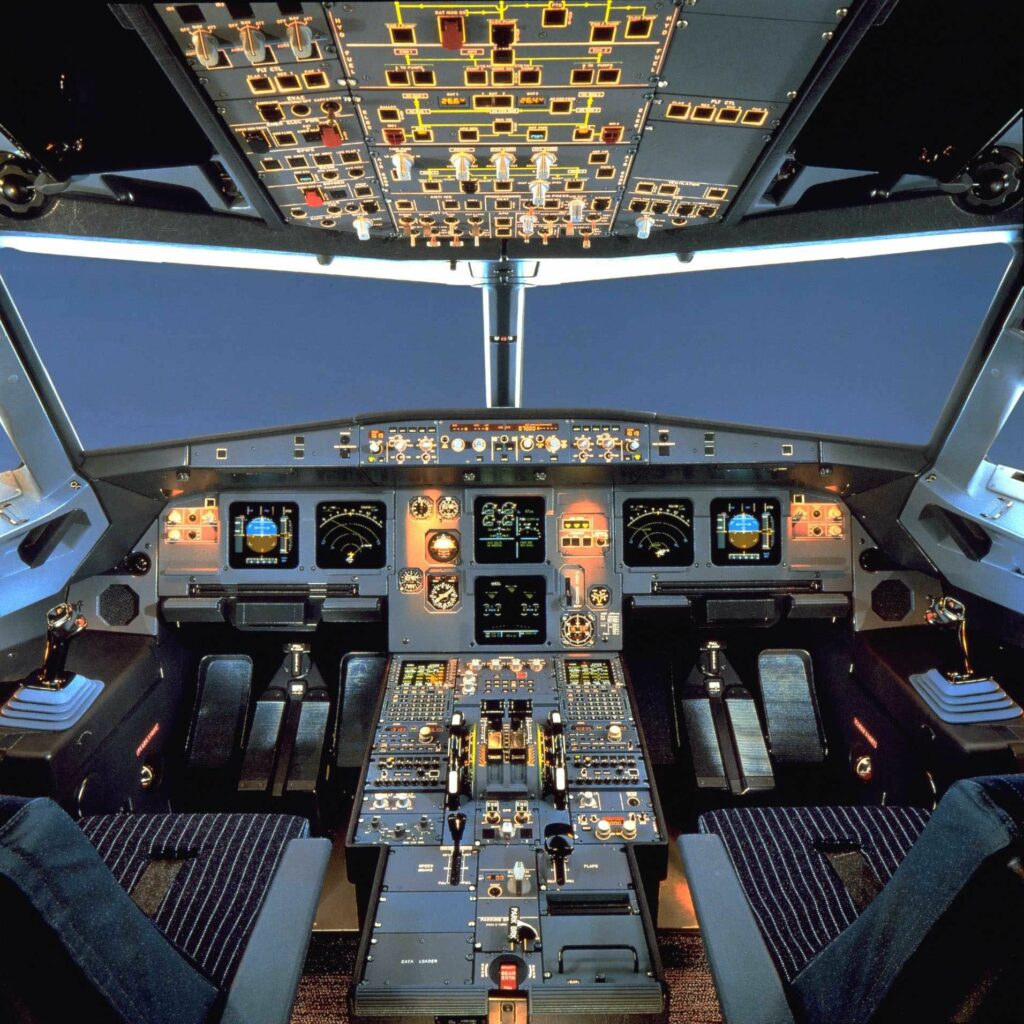
A ‘fly-by-wire’ system is used in the majority of current Airbus aircraft. The system converts the airplane’s manual controls into an electronic user interface. The movements of flight control are translated into electrical signals that are sent via wires, and the flight control computers then determine how to move the actuators of each control surface to deliver the ordered reaction, hence the name.
With the fly-by-wire technology, the pilot need not manually instruct the aircraft computer to carry out tasks like stabilization and safety operations. The plane is handled by the pilot using a joystick and pedals. The joystick, located next to the main console, is used in conjunction with the pedals to convey electronic signals. On the other hand, most Boeings use a more conventional yoke.
When the pilot pulls back on the yoke, it causes a chain reaction that, with the aid of hydraulics, moves the plane’s control surfaces. The Boeing has fewer electronic layers between the pilot and the machinery than the Airbus does. Although some pilots claim to have a greater “feel” for the controls in a Boeing due to the plane’s reduced reliance on electronics, others say they prefer the “video game” atmosphere of an Airbus.
6- The Cockpit Design

The cockpits of Boeing aircraft are more conventional in design, having a large number of physical controls. Pilots upgrading from older aircraft may find this layout more familiar.
But Airbus cockpits are more cutting-edge and minimalist, thanks to the use of digital displays and touchscreens. This method streamlines data storage and organization, allowing pilots faster access to vital statistics.
7- The Tail
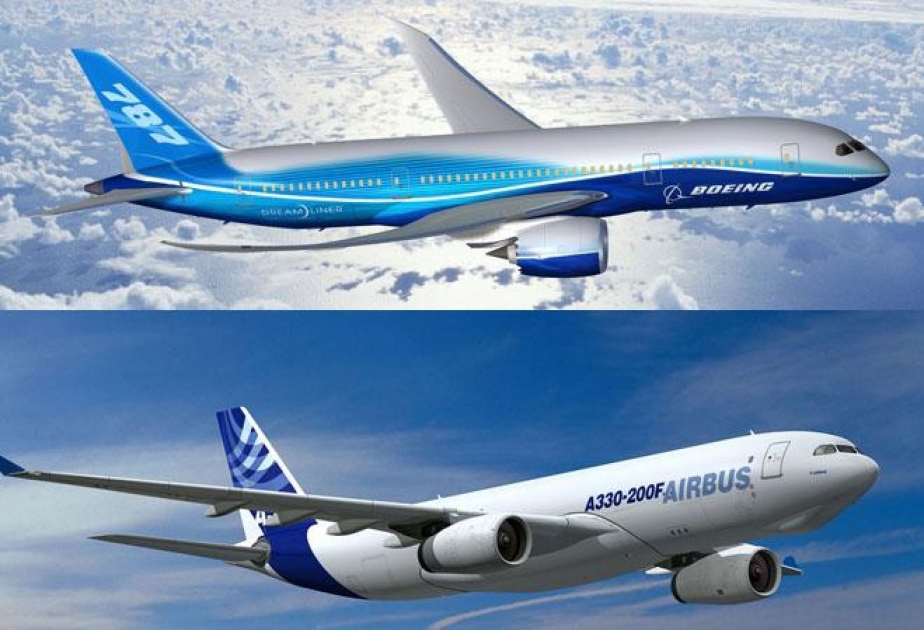
The tail sections of Airbuses and Boeings are shaped differently. On the tail part of an Airbus, the fuselage continues to lie flat, but on a Boeing, it slopes downward. When viewing the plane from the side, as opposed to the rear, you can clearly see this distinction.
8- The Lighting

There are many different kinds of lights on board modern airliners, all of which contribute to the aircraft’s safe operation. There are some lights that are only turned on during certain phases of the flight, like when the plane is taxiing, while others remain on the whole time.
There are two strobe lights, one on each wingtip, on an Airbus plane. These lights flash in rapid succession according to a predetermined schedule. However, only a single strobe light is mounted on each wing of Boeing planes. This is why the lights blink at set intervals. It’s worth noting that the wing strobes and the rear strobes each flash simultaneously.
Airbus Pros And Cons
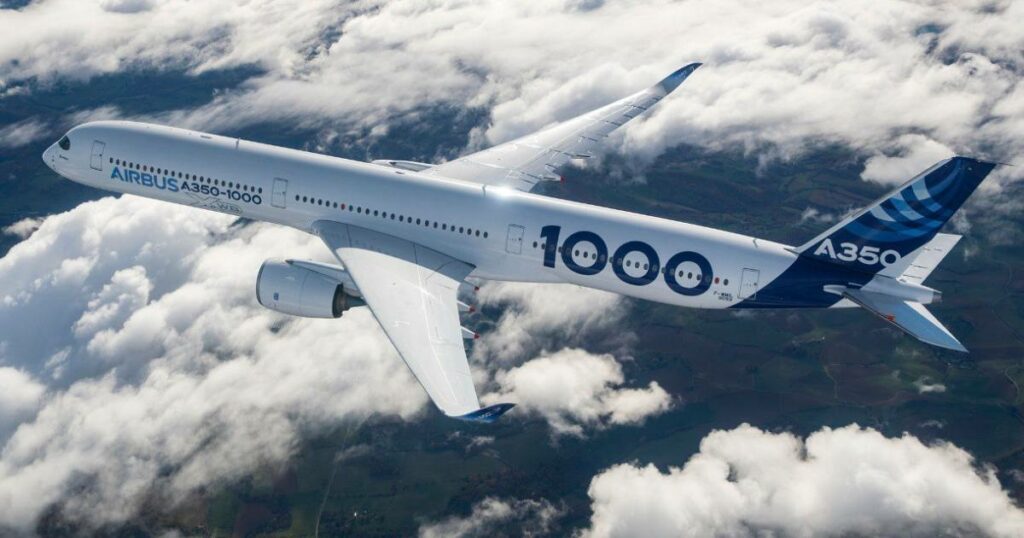
Pros
- Expenditure-class seats that are 18 inches in width
- The A380 and A320 have more comfortable cabins
- More development is spurred by EU funding
- Changing aircraft requires little preparation for pilots.
Cons
- Lesser longevity
- Pilots will have less of a sense of control.
- Overly reliant on machines
Boeing Pros And Cons

Pros
- High longevity
- The 777 and 787 have more comfortable cabins.
- Improved pilot sense of control.
Cons
- Economy-class seats that measure 17 inches in width
- Other aircraft MCAS require additional training.
Related: How Fast Do Planes Fly? | All Plane Types (Takeoff, Landing)
Comparison: Airbus vs. Boeing
In 1916, William E. Boeing started the American aircraft business Boeing. Boeing, a company that has been around for more than a century, has had a major impact on the development of the aerospace sector. In contrast, the European cooperation Airbus was founded in 1970 to pool the aeronautical expertise of France, Germany, and the United Kingdom. Airbus’s remarkable expansion over the past half-century has made it a formidable rival to Boeing around the world.
Market Dominance
Boeing and Airbus are formidable competitors in the aerospace industry, always vying for market share and orders. Thanks to the success of the A320neo family, Airbus has maintained a little larger proportion of the market in recent years. New aircraft models are constantly being developed by both firms in an effort to outdo one another and gain a larger piece of the market.
The Actions for the Environment
Airbus and Boeing are taking different approaches to overcoming a greater hurdle as they deal with the financial fallout of the coronavirus outbreak decarbonization. Both Airbus and Boeing are dedicated to doing their part for the environment by creating more fuel-efficient planes and using environmentally friendly production methods.
Airbus and Boeing have both released new aircraft models in recent years that make use of cutting-edge materials and aerodynamic design to reduce fuel consumption, such as the A350 and 787, respectively. Both companies are also spending money on R&D to investigate electric and hydrogen-based technologies for use in aircraft propulsion in an effort to make aviation more environmentally friendly in the future.
Production & Delivery
Airbus’s rate of aero plane deliveries to clients is higher than that of Boeing’s. Boeing is making a comeback, but the pace of its deliveries has been slower than expected, despite the fact that the company has hundreds of planes ready to go with just minor finishing touches.
The company is likewise having trouble maintaining a steady production rate of 31 planes each month. Airbus hopes to produce as many as 75 aircraft per month from its popular Airbus A320neo family, but the European jet manufacturer is having trouble keeping up with deliveries. In addition, Airbus is delaying supplier deliveries from 2022 to 2023, which suggests a discrepancy between the stated and real production rate.
Therefore both companies are vulnerable to external factors such as economic downturns, geopolitical tensions, and regulatory shifts.
FAQs
Airbus or Boeing: Which Is Safer?
We can’t say that one is safer than the other. In order to receive international approval, both firms must meet stringent requirements for aeroplane safety. All of Boeing’s other planes were safe to fly despite the company’s recent problems with its 737MAX models.
From the viewpoint of a pilot, is Airbus or Boeing superior?
For decades, pilots have argued over whether plane truly is the superior model. Both Airbus and Boeing have their strong points and weaknesses, so which one is best is mostly a matter of opinion. Some pilots like the Airbus because of its roomy interior and handy tray table, while others favour the Boeing because of its no-compromises design, which allows them to disengage the aircraft and fly it manually at any time.
From the perspective of passengers, Airbus or Boeing?
There is not much of a distinction between the two planes from the perspective of the passengers. While the A320 may have slightly more spacious seats, the quality of service provided by the flight attendants and the overall in-flight experience are far more likely to sway passengers’ opinions than the manufacturer of the planes itself.
Conclusion
In the end, travelers can rest assured that both firms’ planes are safe and dependable. Preference is the deciding factor in the Boeing vs. Airbus dispute. Both planes can take off and land safely and fly very fast. Each plane is built with a design that has been proven safe and effective in the field. Therefore, the variations do not compromise the plane’s efficiency or safety in any way. Instead, they serve as distinguishing features of individual brands.
Airline companies, not plane builders, are responsible for producing and designing cabin interiors. Although passengers’ comfort is crucial, it is ultimately determined by variables outside the control of either Airbus or Boeing. In the end, it all boils down to a matter of taste. Individual passengers are free to choose either the government-backed Airbus or the military-contracted Boeing.

